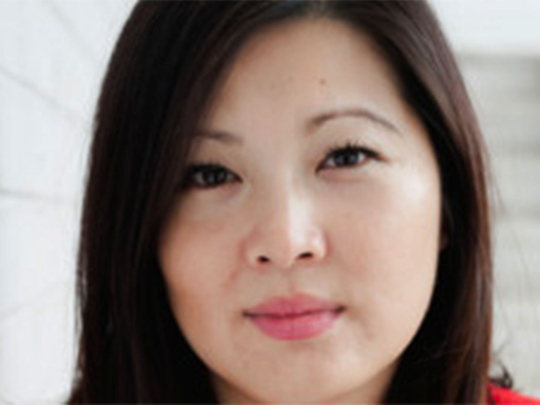
China introduced its one-child policy in 1979 to slow the population growth rate. It was perhaps the most controversial social experiment in population control in contemporary history. Chinese leaders set a target of quadrupling the country’s per capita national income. A goal that planners believed could only be achieved if the number of people was reduced. In October 2015, the Chinese government announced that it was scrapping the policy and would now allow all families to have two children.
In “One Child: The Story of China’s Most Radical Experiment” Mei Fong says the repercussions will haunt China for decades. Published in February this year (Houghton Mifflin Harcourt), the book looks at these consequences and the human cost. It begins in 2008 with Fong taking a train to Sichuan with farmers going home to find out if their only children have been killed in a devastating earthquake.
The book deals with China’s rapidly ageing population, (based on estimates, 34 per cent of its population will be over 60 by 2050), the dearth of women due to a skewed sex ratio and the group that may be the only one that benefited from the policy — China’s urban females.
Fong, a Malaysian-Chinese author and journalist, has worked for more than a decade as a foreign correspondent for the “Wall Street Journal”, covering Hong Kong and China. She won a shared Pulitzer Prize in International Reporting for her work on China.
Fong spoke to Weekend Review about the impact of the policy and what compelled her to write the book on the subject. Excerpts:
What made you gravitate towards writing about China’s policy of limiting families to one child? How did you go about getting the stories from people?
I’ve always thought China’s one-child policy was one of the most fascinating things about the country, like something straight out of an Orwell or a Huxley novel. Except that it’s not science-fiction, it’s real life. It is the world’s most radical social experiment and has irrevocably shaped how one-sixth of the world lives, loves and dies.
The book is filled with stories on how the one-child policy has changed people’s lives, from a family planning official, now in hiding in America, who struggles with the guilt of being responsible for more than 1,500 forced abortions. Or the obscure economist who courageously opposed the policy when it was first launched, and who later helped set up secret zones where people could have two children with few restrictions.
I also write about parents who’ve adopted children from China, children they believed to be unwanted. Some discover murkier truths: their children were kidnapped, sold and still have biological families in China searching for them.
There are many, many stories like that in the book, some thumbnail sketches, some more full-blown. This is a book about people, not numbers.
How has the policy shaped China as it is today?
After more than 30 years, the policy has created huge imbalances in China: too old, too male, and too few workers.
The policy, coupled with China’s long-standing cultural preference for boys, has resulted in 30 million surplus men. This is a group of bachelors, numbering more than the population of Canada, who have no hope of finding brides in China. Numerically, the women aren’t there.
By 2050, one in four people in China will be a retiree. If all the seniors in China were to form their own country, they’d be the world’s third largest. Now, that has nothing to do with the one-child policy, but simply a function of people living longer, thanks to advances in healthcare. But the policy has sharply reduced the number of workers to support this massive aging population.
Currently China has a five-to-one worker-to-retiree ratio. In a little more than two decades, this will shift to an alarming 1.6-to-1 ratio. China is the only society where the worker-to-retiree ratio is shrinking, of course. Most modern societies experience that because most of us are living longer and having fewer kids. But this kind of transition took more than 50 years to happen in Europe. The one-child policy has accelerated the process on China so this transition will happen in just one generation. They are not prepared.
Did the policy skew the male-female ratio? How? Did you perceive a preference for males, as in India?
Both China and India have a gender imbalance because of cultural preference for boys. But China is far worse, because the one-child policy sharply limited family sizes. Globally, about 105 boys are born for every 100 girls. That’s considered a roughly 50-50 equivalent, because nature makes a few more boys to compensate for the fact that males tend to die in greater numbers due to more high-risk behaviours. In India, about 110 boys are born for every 100 girls, because of the son preference. In China, where people can only have a limited number of kids, and many prefer sons, there are 116 boys born for every 100 girls, on average. In some provinces, the difference is even more marked, as much as 148 boys for 100 girls.
So the answer is, China would probably have had a gender imbalance problem even without the one-child policy, but it would not be as bad as it is now. When you are limited to just one or two children, people are more inclined towards unpalatable measures such as sex-selective abortions and female infanticide.
How was the one-child policy enforced? What kind of cases did you come across where people had resisted the policy? Were they on an individual level? Were there any large-scale examples?
To make such an unpopular policy work, the Chinese Communist Party made birth targets a major priority for their officials, so much so that all officials — not just family planning officials — were liable for censure, fines or sacking if their district or areas exceeded birth quotas. That forced them to be as harsh, if not more so, to people under them.
To make people comply, they enforced a series of punitive measures: heavy fines equivalent to a multiple of your annual household income, property seizure, or, in the case of anyone working for government-linked companies, job losses. On top of that, sterilisations — sometimes forced — and abortions, again, sometimes forced, were routine. People, of course, resisted in a variety of ways — some ingenious ones, such as using fertility technology to have twins or triplets, which count as a single birth, or hiding their surplus children, or bribery. Many simply tried to evade family planning officials until they carried a child to full term. They might still be liable for fines, but at least, they’d have the child. If they were unlucky, and caught, they’d most likely be subjected to a forced abortion.
That’s what happened in the case of Feng Jianmei, who’d been hiding and evading officials until she was caught and taken away for an abortion when she was seven months pregnant. A relative snapped a picture of her lying next to the body of the seven-month-old foetus and it went viral in China, horrifying people who thought these kinds of practices were in the past. That happened in 2012.
On a psychological level, how did the policy impact people? There may be so many people who grew up as the only child.
The one-child policy is really a misnomer. It’s used to describe a set of policies governing reproduction in China, which began in 1980. Not everyone in China is subject to the strict one-child-per-family ratio, some can legally have more depending on where they live, how much they are willing to pay, if they are minorities, or have dangerous jobs, such as coal miners or fishermen.
About one-third of China is subject to the strict one-child rule, but these are largely urban families who tend to be the most economically and culturally influential in China, so this has a disproportionate effect on the country’s growth and future going ahead.
There’s been a lot of research to see whether the “Little Emperor” generation is more entitled and selfish. So far these studies are inconclusive, though there is some interesting evidence to suggest singleton children in China tend to be more pessimistic, more risk-averse and less altruistic. Broadly speaking though, I see the one-child generation as embattled and increasingly burdened as the wheel turns and they increasingly carry the weight of ageing parents and grandparents on their shoulders. In short, I see the oldest of them — who are in their 30s — less as Little Emperors, and more as Little Slaves.
Did the policy have any positive impacts?
If you are female and born in a Chinese city after 1980, your chances of being well-fed and well educated is probably better than at any other time in Chinese history. Not having to share parental resources with siblings meant China’s urban women were able to go to college and graduate schools in record numbers.
But similar advances were made by females in neighbouring countries, which did not have the one-child policy. And certainly, on the other side of the equation, women in rural China were the ones who bore the brunt of some of the policy’s worst excesses, such as forced abortions. The shortage of women in China has also resulted in a rise in sex trafficking, so it’s negatively impacted women in Cambodia, Vietnam and North Korea.
Did the one-child policy achieve what it had set out to do?
I think the problem is we tend to conflate population planning with one-child policy. They are not the same thing. China was right to want to reduce its population growth to ensure more people received healthcare and schooling, but it did not have to resort to the extremes of the one-child policy. In fact, in the 10 years before the policy, the country practised a less invasive form of family planning. Called the “Later, Longer, Fewer” campaign, people were encouraged to get married later, have fewer children and space them further apart. The sharpest reductions in family size came from that period, and not from the one-child policy period.
Many population scholars think it’s possible China could have reduced population significantly, possibly even to current levels, without resorting to the one-child policy. Certainly China wouldn’t have to deal with such a severely unbalanced demographic mix as it has to, now.
Do you think the scrapping of the policy will make a difference in China?
On a personal level, certainly more people would be happy to have more choice and freedom. But on the wider scale, the problems engendered are set to occur for at least one generation, if not longer. Always assuming more people take up the government’s urging to have more children — and this is by no means certain — it would take 20 years, give or take, to grow new workers. It’s not just a shortage of people, it’s the mix as well — given the shortage of women, where are the mothers of this generation? Also, given that women are the traditional caretakers of the elderly, the problems of an ageing China are massively accentuated. It’s hard not to feel that in its hurry to reduce population growth, China has shot itself in the foot, demographically speaking.
Despite the announcement that the policy is scrapped, many people are still opting to not have more than one child. Why is that, and who are the people preferring not to have more than one kid?
Strictly speaking the policy’s not scrapped, since it doesn’t describe a strict one-child limitation, but a set of limitations on family size that still continue. The “one-child” policy continues, until all restrictions are dropped.
The trend for smaller family size is largely a global one. China’s women are not alone in wanting smaller families so they can have careers and other lifestyle choices. On top of that, there’s the lingering after-effects of more than 30 years of propaganda extolling the benefits of the single-child policy. You can’t spend three decades telling people that the one-child family is the ideal without some of it sticking. Advertising works.
Anuradha Sengupta is a writer based in Mumbai.









